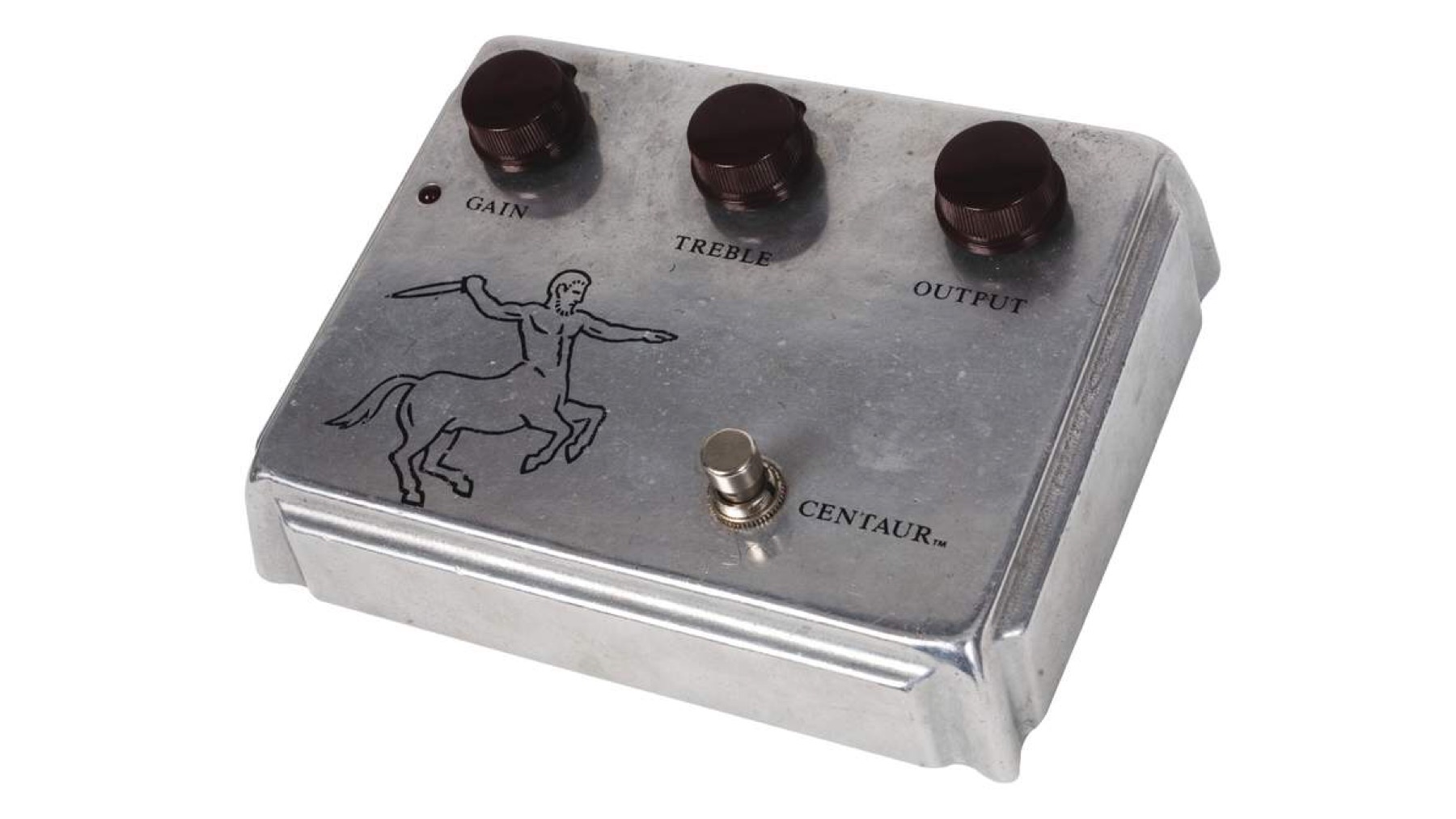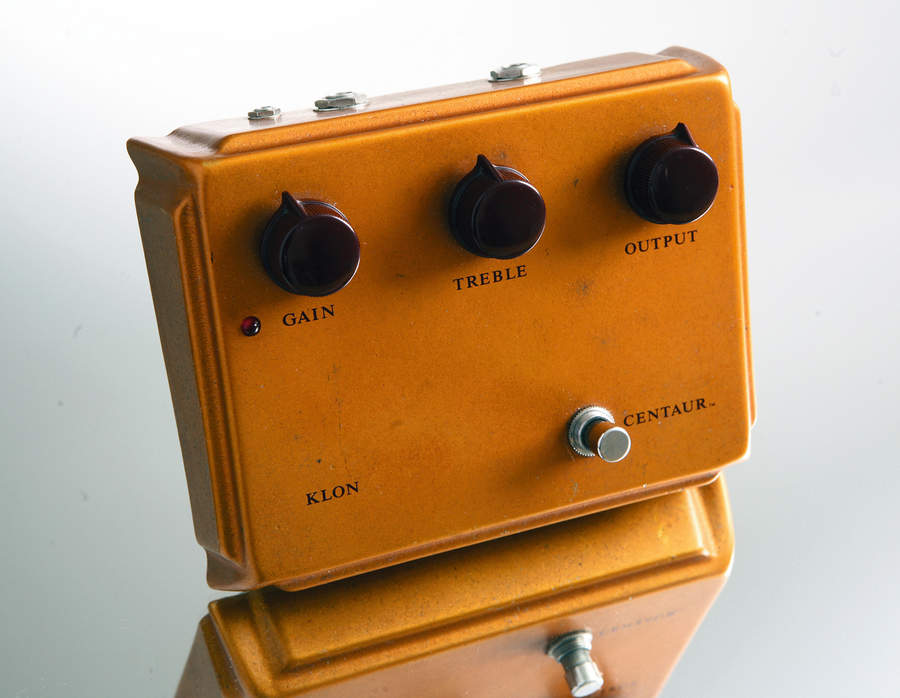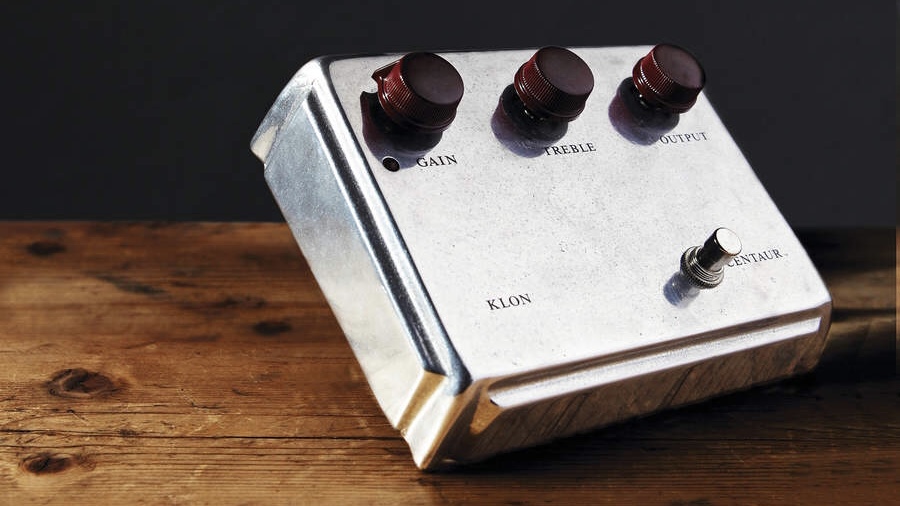Classic Gear: How the Klon Centaur Overdrive Became a $5,000 Pedal
This boutique boomer became one of the most sought after effects pedals on the market.

Ask guitarists what the Klon Centaur overdrive pedal does for their tone range, and the answers can span from “very little” to “everything.” In fact, the more time you spend with the unit, the more you’ll find it difficult to turn the thing off without experiencing a tremendous sense of loss. No wonder the pedal has become highly sought by guitarists since production ceased in 2009.
The Klon Centaur was developed by Boston native Bill Finnegan and first sold in 1994 after several years in development. The pedal was the result of Finnegan’s quest to add a little juice between his Telecaster and the Fender Twin Reverb he habitually gigged with. The ubiquitous Tube Screamer’s midrange hump and spongy response just weren’t for him. Thus, he decided to create an overdrive that would be clear, transparent and articulate while adding a thickening, characterful boost that wouldn’t affect the tone of his guitar and amp.

The Birth of Boutique
In the early stages of the Klon Centaur’s development, Finnegan got assistance from his pal, and MIT graduate, the late Fred Fenning and an MIT student. They powered through iteration after iteration, tweaking the circuit until it was just right. Finnegan loved the results, as did guitarists around the world who discovered the Klon Centaur’s charms. Through the pedal’s 15-year production run, Finnegan personally hand-built some 8,000 units on his wobbly, folding card table before calling it a day in 2009.
Lacking an overt sound of its own, the Klon Centaur allows tube amps to hit the overdrive sweet spot at lower volumes without slathering some synthetic solid-state “tube distortion” sound over the top of the signal. With its gain knob low and volume control set to unity gain, the Klon is nearly undetectable when switched on, other than bringing a subtle sweetness to the tone. Increase the gain, though, and everything gets richer, deeper and more three-dimensional, adding a magic that can leave your guitar sounding dull and uninspired once you switch the thing off again. That said, a Klon is never entirely off. Because the pedal has a buffered, rather than true, bypass, the guitar signal always passes through part of the circuit.

Attack of the Klones
Given that it was developed by non-guitar-playing MIT grads, the Klon Centaur is an entirely original circuit, rather than one based on existing overdrives, and it’s quite a complex one at that. The gain stages incorporate four op-amps with germanium diodes between certain stages, and it uses multiple signal paths that split the overdrive and clean signals, which are mixed again before the output.
Finnegan went some way toward protecting the circuit by covering his hand-soldered, printed circuit boards in thick epoxy. But given the pedal’s popularity and cult status, plenty of cloners have undertaken the laborious process of chipping away the goop to learn what lies underneath.
After discontinuing the Klon Centaur, Finnegan began developing a pedal whose production could be outsourced more affordably and in greater numbers, partly through the use of surface-mount rather than through-hole components. The resulting Klon KTR was released in 2012. Using the same original Centaur circuit, but with a switch for optional buffered or true-bypass operation, the pedal costs significantly less than the original hand-built Klon Centaur’s on the used market today. Meanwhile, several other makers have vied for the position of “best Klon Klone,” with popular renditions emanating from J. Rockett, Wampler, Rimrock Effects and others.
Get The Pick Newsletter
All the latest guitar news, interviews, lessons, reviews, deals and more, direct to your inbox!
Dave Hunter is a writer and consulting editor for Guitar Player magazine. His prolific output as author includes Fender 75 Years, The Guitar Amp Handbook, The British Amp Invasion, Ultimate Star Guitars, Guitar Effects Pedals, The Guitar Pickup Handbook, The Fender Telecaster and several other titles. Hunter is a former editor of The Guitar Magazine (UK), and a contributor to Vintage Guitar, Premier Guitar, The Connoisseur and other publications. A contributing essayist to the United States Library of Congress National Recording Preservation Board’s Permanent Archive, he lives in Kittery, ME, with his wife and their two children and fronts the bands A Different Engine and The Stereo Field.
"The only thing missing is the noise from the tape loop." We review the Strymon EC-1 Single Head dTape Echo, a convincing take on a very special vintage tube Echoplex
"BigSky MX will be replacing the BigSky as my go-to reverb pedal. I’ve heard nothing that covers all the bases with such pristine and detailed audio quality." We crowned the Strymon BigSky MX the champ of multi-reverb pedals











